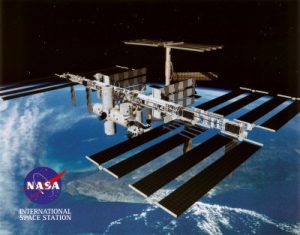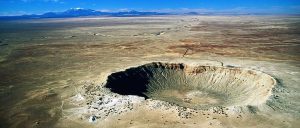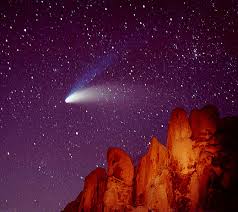In Defense of Manned Space Flight #3
There are of course the usual arguments against humans in space. But let’s start with an examination of that statement, “humans in space.” Humanity is now and has always been “in space.” The thing in the sky is a G-2 main sequence star perhaps halfway through its lifespan. Its attributes govern every second of our existence on this ball of rock we live on. We are in space every moment of our life. The so-called “realists” who think of space as something outré, that doesn’t involve them, suffer from myopia of epic proportions, like an astronomer who looks through the wrong end of a telescope.
Space has and can intrude on even their parochial world in an instant. October 29, 2003 – the Halloween Storm – spawned auroras that were seen over most of North America. Extensive satellite problems were reported, including the loss of the $450 million Midori-2 research satellite. A huge solar storm impacted the Earth, just 19 hours after leaving the sun. Days later on November 4, 2003, one of the most powerful X-ray flares ever detected swamped the sensors of dozens of satellites, causing satellite operations anomalies. Astronauts hid as deep as they could go in the International Space Station, but still reported radiation effects including ocular “shooting stars.”

Meteor Crater lies thirty-five miles from Flagstaff, Arizona. It dates from an impact 50,000 years ago. We were here. We just weren’t under that one as humans hadn’t reached North America. Which is good, as this was a 2.5 megaton wake-up call. That was utterly dwarfed by the 1908 event in Tunguska, Siberia. That event, thought to be an airburst of a bit of cosmic flotsam, was in the 10-15 megaton range, right up there with a strategic-level hydrogen fusion bomb. These cosmic marbles aren’t gone and there is nothing that says Earth’s orbit is sacrosanct from them just because we have cell phones, cable TV and it would be gosh darn inconvenient for us to stop a thirty-five mile long rock at 45,000 mph.
Mars was hit by one. It went over one of the Mars rovers, which will not note it with anything other than detached mechanical efficiency, if their limited instrument packages allow them to take any note at all. We could see it on TV, but there, my friends, for the grace of God, go we.

I remember looking up at comet Hale-Bopp during its last approach to Earth. While others were enjoying the cosmic light show (and I won’t claim to be immune to that) I did realize that I was looking at global species extinction mere light-minutes away, had the orbit been a little different. 
A miss is as good as a mile with cosmic bowling but you are playing for all the marbles. When you look at the moon, realize that you are looking at a body created because something hit the good earth we’re standing on, hard enough to tear that bit off and hurl it into the sky. If that is too big for you, too out there and distant for your contemplation, go stand by Upheaval Dome in Utah.


